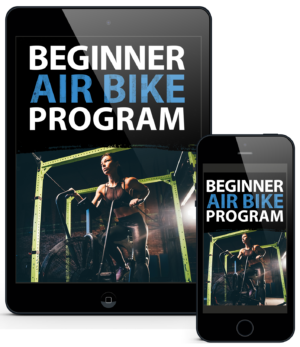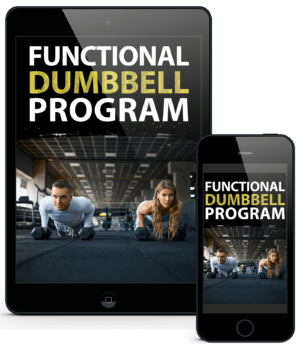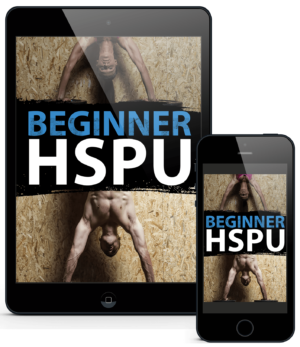When undertaking any fitness program, it’s important to have a clear understanding of your goals to help determine what type of program is best for you. When starting a strength training program, it’s important to understand the different types of strength and how each type of strength is developed.
The science behind program design is based on the principle of specificity, which states that the body adapts to the exact types of forces and stresses imposed upon it. This means that muscular strength is developed in response to the amount of resistance and types of movements used in a workout program and strength endurance is developed in response to a stimulus like volume and intensity.
There is a continuum of strength which classifies the different types of muscle contractions which include:
Absolute strength
Relative strength
Explosive strength
Strength Endurance
More importantly, in order to express all forms of strength, you must first have a solid foundation and base level of absolute strength.
Let us take a look at the four components of the strength continuum and how best to achieve them.
Absolute Strength.
To achieve your maximum physical potential, you must build absolute strength. It is your foundation. In other words, absolute strength is the absolute most weight an individual can lift regardless of size or weight. It requires high levels of neuromuscular efficiency to enhance both intra and inter-muscular coordination.
Examples: Powerlifting (squat, deadlift, and bench press), strongman, odd object, and 1-rep max lifts.
In Crossfit specifically, maximal strength is tested frequently. To be successful in the sport, or even just to reach your full potential, absolute strength plays a key role in general physical preparedness. While it’s not always the strongest athlete that is the fittest, it’s one of the major key components and the foundation for all other types of strength.
How to train it?
Compound and single-joint movements using free weights or select machines.
Intensity: 90 to 100 percent of 1RM.
Build a solid foundation. Move well and with purpose. Lift heavy often.
Similar to absolute strength is what is known as relative strength.
Relative Strength.
Relative strength is the total amount of weight your body can lift, relative to your body weight.
Relative strength pays dividends when it comes to gymnastics movements and is highly beneficial in Crossfit where it’s advantageous to be small but mighty. Think Matt Fraser, Tia Clair Toomey, and Rich Froning, who are all prime examples of athletes who demonstrate tremendous strength relative to their size.
How to train it?
Training relative strength is very similar to training maximal strength. To gain strength, you have got to lift heavy, often, and with good movement patterns.
Rep ranges should be between four and ten, but the focus should be on adding weight while maintaining body control through changes of direction, NOT a specific number of repetitions.
Beyond absolute strength, it’s important to be able to move that same heavy load quickly, and that’s where explosive strength comes in.
Explosive Strength.
Explosive strength is the ability to produce a maximal amount of force in a minimal amount of time; muscle lengthening followed by rapid acceleration through the shortening phase. Focus is on the speed of movement through a range-of-motion (ROM).
Explosive strength is based on the ability of the contractile element to rapidly generate tension while power enhances the ability of elastic tissue to minimize the transition time from lengthening to shortening during the stretch-shorten cycle.
Examples: Olympic lifting
Explosive strength is just as important in Crossfit as absolute strength. Olympic lifting specifically requires both an abundance of technique and explosive speed. In order to get under a heavy bar, the bar must be moving fast!!!
How to train it?
Explosive strength is best trained through compound and single-joint movements using a variety of different free weights (barbell cleans, barbell jerks, kettlebell swings, medicine ball throws, box jumps). Intensity: 40 to 75 percent of 1RM.
Reps: One to six. For the greatest amount of muscle power output, the focus should be on fewer reps at a faster, more explosive speed, as fast as possible.
Finally, and perhaps one of the most overlooked forms of strength is strength endurance
Strength Endurance
Strength endurance is the ability to maintain muscular contractions or a consistent level of muscle force for extended periods of time. This type of strength relies heavily upon aerobic and anaerobic pathways to supply muscles with the fuel for contractions.
Examples: Crossfit metcons, high volume bodybuilding, aerobic events, and obstacle course racing.
Strength endurance is particularly important in Crossfit where the ability to prolong fatigue at higher reps is important, as well as aerobic efficiency and the ability to complete a broad range of tasks.
How to train it?
Compound and single-joint movements using a variety of equipment, or bodyweight exercises. Barbell cycling, EMOM’s, sled pushes, general aerobic conditioning.
Intensity: Low to moderate, approximately 40 to 80 percent of 1RM, usually in the rep range of 10 or more.
If you’ve hit a plateau in training, or you have discrepancies in your strength, try focussing on a different type of strength, working in different rep ranges and maybe pushing a little beyond your comfort level. If you LOVE a good one-rep max, it might be time to work in some more aerobic training or even light barbell cycling.
You know what they say, if you always do what you’ve always done, you’ll always get what you’ve always got…and the same goes for strength training.





